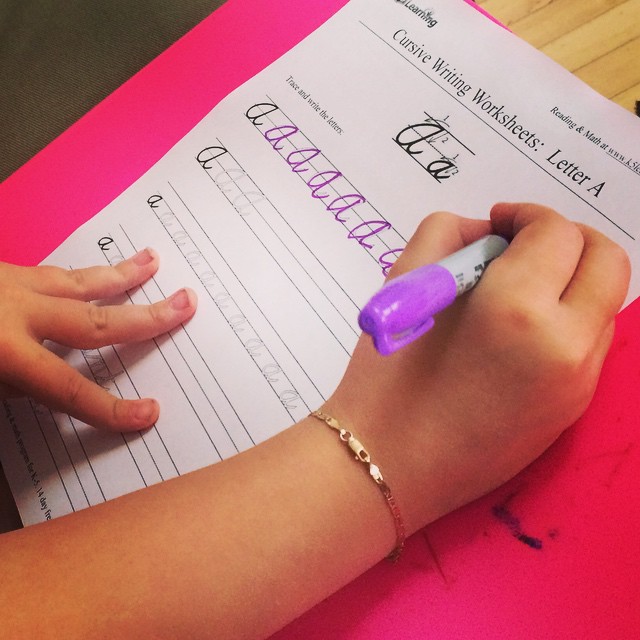Cursive writing is a valuable skill and a precious art form for children to learn
March 4, 2021
As the role of technology in people’s lives continues to grow, the importance of handwriting has slowly depreciated. This widespread replacement of pencils with keyboards has diminished the level of importance placed on handwriting in the classroom.
As a result, students are growing up without the ability to produce legible handwriting. This is impractical for many reasons.
Many government documents and important paperwork still aren’t digitized and must be filled out by hand. Older legal documents written by hand are sometimes read in cursive.
Not to mention, it is embarrassing when children grow up having never developed their own cursive signature to sign contracts.
Many teachers and professors still don’t allow laptops or smartphones in the classroom, and cursive writing is a faster alternative to note taking in regular writing.
“Students who took notes on laptops performed worse on conceptual questions than students who took notes longhand. We show that whereas taking more notes can be beneficial, laptop note takers’ tendency to transcribe lectures verbatim rather than processing information and reframing it in their own words is detrimental to learning,” according to a group of Princeton studies titled, “The Pen Is Mightier Than the Keyboard: Advantages of Longhand Over Laptop Note Taking.”
Due to the faster nature of penning words to paper, cursive writing also helps with reading and writing issues dyslexic students may have, because there is evidence that it “integrates hand-eye coordination, fine motor skills, and other brain and memory functions,” according to Virginia Berninger, a psychologist at the University of Washington.
Handwriting is an important real-life skill that should be emphasized in elementary school. While writing in print is commonplace, cursive should be a part of the curriculum as well.
Currently, cursive writing is recommended by the Common Core Standards to be taught at the kindergarten and first grade levels in 42 states and the District of Columbia. Intensive instruction is emphasized in 14 states.
While many argue that time can be spent teaching students other subjects, cursive is a classic art form, one that many schools are depriving children of before they’re even old enough to appreciate it.
To put pen to paper is to put one’s own unique linguistic mark on the world. Imagine a future in which no one is able to write properly.
What was once a critical facet of human expression would be rendered obsolete by generic digital fonts. What a dark Black Mirror-esque, dystopian future that would be.








Sheila Lowe • Mar 4, 2021 at 11:35 pm
I applaud this article. As president of the American Handwriting Analysis Foundation, I’m always delighted to see cursive writing promoted for a vast array of reasons. For anyone who wants to understand better why it is so important for children to learn to write in cursive in a digital age, I invite you to download a free white paper, which details more than 80 peer-reviewed studies. It is available in 7 languages :www.ahafhandwriting.org/publications